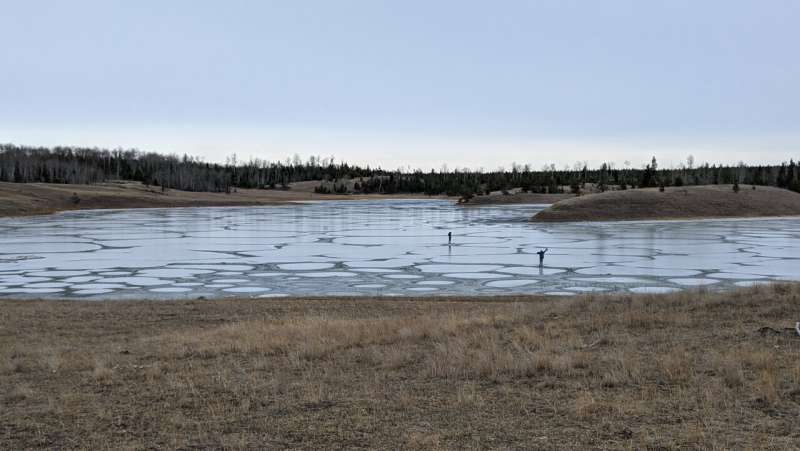Biogeochemical explanations for the world’s most phosphate-rich lake, an origin-of-life analog
Sebastian Haas, Kimberly Poppy Sinclair & David C. Catling
Communications Earth & Environment volume 5, Article number: 28 (2024)

Last Chance Lake in western Canada in November 2021, when the lake has shrunk into many smaller pools and ice has formed on top of each pool.
Kimberly Poppy Sinclair/University of Washington
Abstract
Environmental phosphate concentrations are typically much lower (~10−6 M) than needed for prebiotic phosphorylation of nucleosides, critical for the origin of life. Here, we tested hypotheses explaining highly concentrated dissolved phosphate in carbonate-rich “soda” lakes by examining phosphorus and nitrogen cycling in Last Chance Lake and Goodenough Lake, Canada. We find a lack of geochemical phosphorus precipitation, that sedimentary calcium is in dolomite rather than apatite, and that N2-fixation rates, probably suppressed by high salinity, are too low to create significant biological phosphate demand. Thus, nitrogen-limitation of biological production and precipitation of calcium-rich carbonate instead of apatite combine to allow unimpeded evaporative phosphate buildup in Last Chance Lake to the highest known natural levels (37 mM) due to small biological and geochemical phosphorus sinks. Forming on basaltic rock, which was likely common on early Earth, evaporative soda lakes were consequently plausible origin-of-life settings with sufficient phosphate for prebiotic synthesis.
FREE PDF GRATIS: Communications Earth & Environment Sup. Info. Peer Rev File







